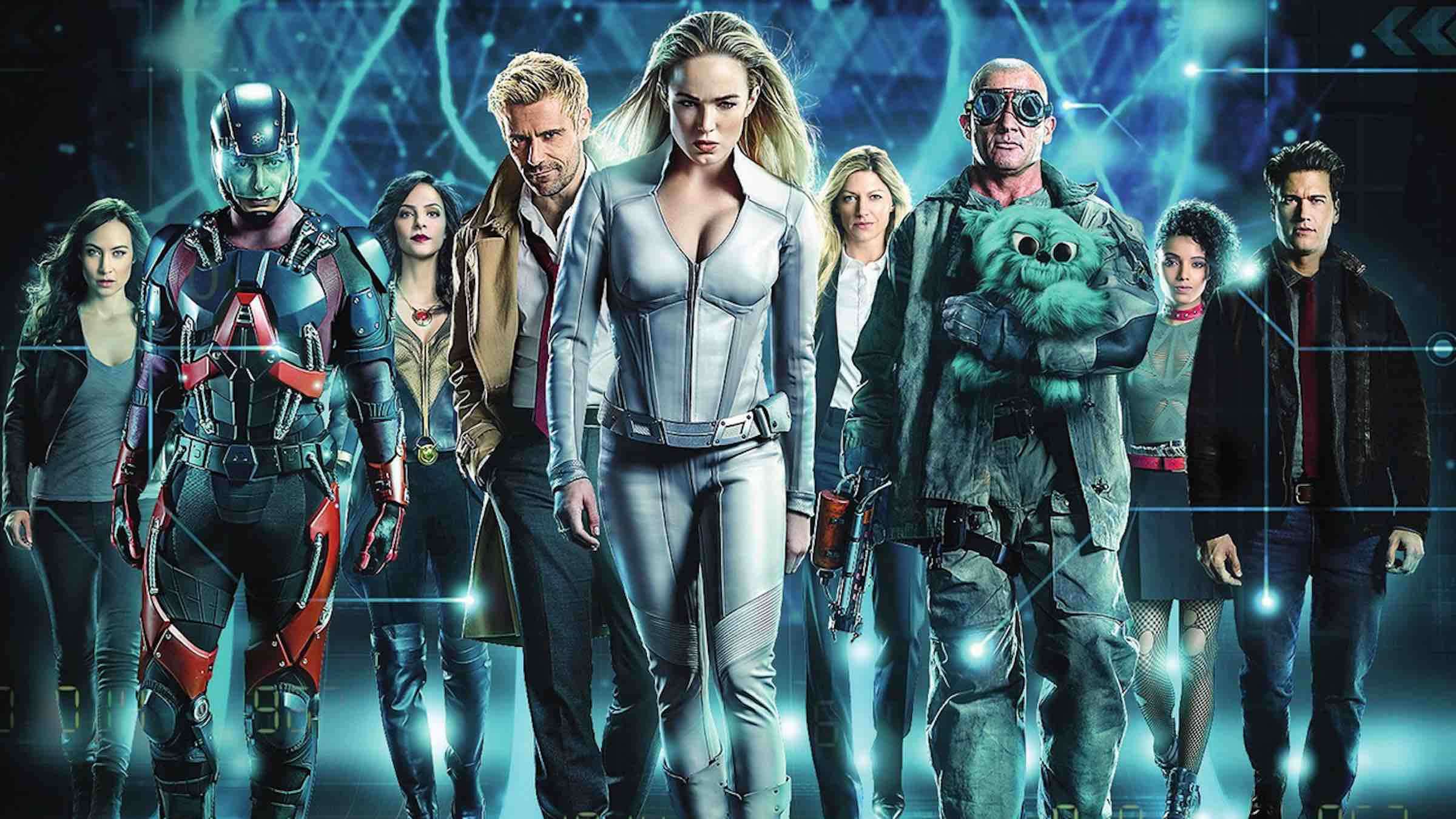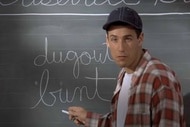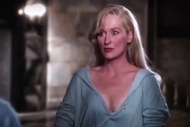Create a free profile to get unlimited access to exclusive videos, sweepstakes, and more!
DC's Legends of Tomorrow went from forgettable spin-off to the Arrowverse's best show by getting weird

Though it's currently in-between seasons, fans of The CW's DC's Legends of Tomorrow know that this wacky little show-that-could has grown in wholly unexpected ways since it premiered five years ago on Jan. 21, 2016. When it first began, Legends of Tomorrow seemed destined for failure. It was an afterthought spin-off featuring castoffs and remainders of The CW's two other successful superhero shows (Arrow and The Flash) — a ragtag bunch that was smushed together seemingly without much criteria. The show's first two seasons were, admittedly, rough. But suddenly, something changed. Legends of Tomorrow stopped trying to be Arrow, or The Flash, or to even continue attempting to follow the superhero formula. Instead, Legends just decided to be its own insane thing, and in doing so went from the most forgettable show in the Arrowverse to The CW's best superhero series because of it — paving the way for other oddball superhero shows like Doom Patrol and Harley Quinn to follow in its footsteps.
When DC's Legends of Tomorrow first started in 2016, The Flash was entering its third season, and Arrow its fifth, so as is common with shows beginning to settle into their groove, there were some growing pains. The Arrowverse had a handful of characters who didn't quite fit in on their own shows anymore, including Sara Lance, Leonard Snart, Hawkman and Hawkgirl, and Firestorm, all of whom were tossed together on a new series, Legends. To look at it on paper, it wasn't exactly a strong start — there was no proper "lead" or star power, no single character for the show to revolve around; The CW's superhero shows are called "The Flash" and "Supergirl" and "Arrow" for a reason, after all. Even as indicated by its title, Legends of Tomorrow positioned itself as an ensemble — a first for the Arrowverse.
Not only was it an ensemble where every other DC show had a single protagonist, but Legends of Tomorrow was also a brand new concept. At the time, there was no comic run in DC's history that had that same lineup of characters, so there was no reliable built-in fanbase for this new series — you couldn't just hook viewers because it was the new adaptation of a comic they loved as a kid, even if it did share a title. The comic-less concept also meant that it couldn't fall back on beloved comic storylines — like The Flash's famed "flashpoint" — to draw viewership.
And as such, Seasons 1 and 2 were admittedly a little shaky. The early seasons of Legends followed some pretty highly serialized storytelling, mainly centered on one of the show's few new characters, Rip Hunter (Doctor Who's Arthur Darvill). Rip was a "time agent" who worked for an agency of time-traveling (but secretly evil) problem-solvers and crime-fighters. Though passable, the show's commitment to sticking with the typical CW superhero formula bogged it down. Legends was trying to replicate the tone of other Arrowverse shows and echo the way season-long arcs were serialized and structured around one Big Bad — but it didn't have the right pieces on the board for the same old shtick to work. The characters had yet to truly click, and the over-reliance on Rip/Time Agency fare as the show's central story was at best mediocre and at worst painfully uninteresting and dry.
Season 2 was more of the same — although there were some roster shakeups, which helped brighten things up a bit. Gone were Hawkman and Hawkgirl (the show's most uninspired characters, by far), and in came Maisie Richardson-Sellers' Vixen and Nick Zano's Nate Heywood/Steel. Vixen and Steel's adversarial personalities (and fresh new storyline thanks to their shared complicated history) helped to gently push Legends in the right direction.
As reflected in Legends' Rotten Tomatoes score, the critical rating jumped more than 20 percent between Seasons 1 and 2. From there, things only got better — from Season 2 to Season 3, the series made its most dramatic jump in tone yet, signaling the true departure from the Legends it began as and ushering in the era of the Legends fans know and love now.
With Season 3, Rip Hunter was booted from the main cast, and two more vibrant personalities joined in his stead: Tala Ashe's Zari (who would go on to become one of the show's best characters, not to mention a fan favorite) and Keiynan Lonsdale's Wally West, a transfer from The Flash. It was in Season 3 where things really went off the deep end in the best way possible.
It's difficult to discern what exactly prompted the writers to veer so sharply in tone, but it was undoubtedly the right call. In Season 3, virtually every aspect of the show went from being typical CW superhero fare to borderline insanity. Gone were stuffy, broody plotlines that had bogged down the show's earlier seasons, instead replaced by more episodic storytelling that amped up the comic hijinks and time-travel shenanigans.
Everything — the music, the costumes, the show's visual style — became lighter and sillier. Even the episode titles (which in the early seasons had bared formulaic names like "Blood Ties" or "Last Refuge") were suddenly replaced with cheeky movie references: "The Good the Bad and the Cuddly," "No Country for Old Dads," and "Necromancing the Stone," just to name a few.
Suddenly, the season's Big Bad wasn't a bureaucratic agency taken down in hand-to-hand combat. The Season 3 finale features the Legends joining hands, Power Rangers Megazord-style, to create a massive blue stuffed animal called "Beebo," who would destroy a demon that people kept accidentally referring to as "mollusk." Season 3 also saw the introduction of Damien Darhk's troubled daughter Nora. Her blossoming romance with Ray Palmer proved to be one of the Arrowverse's most compelling and genuinely believable couples. It also marked the return of Matt Ryan's beloved anti-hero John Constantine, who had last appeared in the Arrowverse only as a cameo on Arrow.
It should also be noted that as Legends got better, it got queer-er: Season 3 introduced Ava Sharpe, a prissy time agent and future girlfriend of Sara Lance, as well as confirmed Constantine's bisexuality by giving him a male lover named Desmond. (Constantine's queerness had never been truly addressed on his self-titled and short-lived solo NBC series.) A season later, the show would introduce a nonbinary-coded character with ambiguous sexuality: Charlie.
Season 4 committed even harder to going off the rails, with everything from Bollywood musical numbers to a time agent who becomes possessed by a demon after getting his nipple bitten off by a unicorn. Constantine also joined the show as a full-fledged regular, giving a second life to his character whose initial existence had been cut short far too soon on his self-titled series. Season 5, the show's most recent, cranked the dial up to 11 by swapping Zari with her brother Behrad in a trick of timeline revision, making one of the Legends a literal god, and trapping our heroes as characters on dystopian versions of Friends and Star Trek. (Yep, before WandaVision was doing the superhero show-within-a-show, Legends did it first.)
In short, Legends of Tomorrow makes for such a fascinating case study because it dared to defy (to borrow The CW's motto) — and boy did it pay off. What once began as a basic superhero show struggling to find a sense of self or even a compelling narrative blossomed into a wickedly funny, incessantly bizarre, character-driven show that now regularly tops "best of" and "critic's favorite" lists. By embracing the insane, being willing to take tonal and narrative risks, and leaning into its own (admittedly ridiculous) concept, Legends of Tomorrow cemented itself as one of superhero television's most beloved Cinderella stories.














